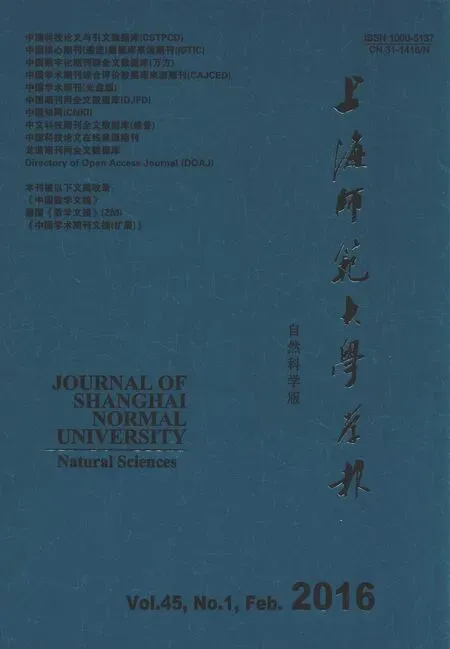Mytilina (Rotifera:Monogonota:Mytilinidae) from Congo Basin
LUO Yongting, WU Bo, SEGERS Hendrik
(1.College of Life and Environmental Sciences,Shanghai Normal University,Shanghai 200234,China;2.Royal Belgian Institute for Natural Sciences,Brussels B-1000,Belgium)
?
Mytilina(Rotifera:Monogonota:Mytilinidae) from Congo Basin
LUO Yongting1, WU Bo1, SEGERS Hendrik2
(1.College of Life and Environmental Sciences,Shanghai Normal University,Shanghai 200234,China;2.Royal Belgian Institute for Natural Sciences,Brussels B-1000,Belgium)
Abstract:Over 110 samples of Rotifera collected during April-May 2010 and June 2012 in freshwater habitats from the Congo Basin,DRC,were examined.As part of the survey,we here report on 8 taxa of Mytilina found.Two of these,M.crassipes (Lucks,1912) and M.trigona (Gosse,1851) are new records for Africa. M.macrocera (Jennings,1894) and M.bisulcata (Lucks,1912) are relatively frequently encountered.M.ventralis (Gosse,1886) and M.trigona (Gosse,1851) occurred in high numbers at one or two localities,whereas M.brevispina (Ehrenberg,1830), M.crassipes and M.michelangllii (Reid & Turner,1988) are very rare.A brief report on a possibly new species of Mytilina,exhibiting peculiar and unique features,is presented.
Key words:Mytilina; diversity; micrometazoa; Congo Basin
CLC number: Q 959.18Document code: AArticle ID: 1000-5137(2016)01-0064-06
1Introduction
Very little is known on the fresh water microinvertebrates including the rotifers of the Congo River and its basin.Indeed,in a seminal review Dumont[1]concluded that ″The African continent is outstanding for its apparently poor and uncharacteristic rotifer fauna″,while remarking that the geologically and climatologically relatively stable Congo Basin had received relatively little attention from rotifer studies.While subsequent studies on the Niger delta and Congo have contributed significantly to falsify the hypothesis of a lack of individuality of the African rotifer fauna[2-4].However,the latter studies remain incomprehensive as they are quite limited in scope and coverage.Therefore,an expedition was performed to Congo Basin during April and May 2010 and July 2012[5],our goal is to increase knowledge of the biodiversity of Rotifera in this area.
The results presented here pertain to GenusMytilinaBory de St.Vincent 1826 of family Mytilinidae (Harring,1913),which is a cosmopolitan family of littoral and benthic rotifers.The family contains 2 genera,MytilinaBory de St.Vincent 1826 andLophocharis(Ehrenberg,1838)[6-7].The genusMytilinahas about 24 valid species-level taxa[8-9],and is exclusively limnobiotic.The animals are loricate,and are characterised by having a longitudinaldorsal sulcus and keel.They normally are separated into two groups according to the stiffness of their lorica[10].The first group has a stiff lorica,usually with spines,and with the anterior margin of the lorica granulated.The second group has a relatively soft lorica,usually without any anterior or posterior lorica spines,except forM.acanthophoraHauer,1938.The lorica is mostly transparent and the anterior margin of the lorica is not granulated.
2Material and methods
In total,we examined over 110 samples collected during the Congo River 2010 expedition period.In addition to these,we were able to examine two additional samples collected in June 2012 from the same region.All samples were collected by hauling plankton net through the water,especially in littoral areas,and preserved in 4% formalin.Individual rotifers were separated under a WILD M10 dissection microscope and examined and measured on a compound microscope (Olympus BX51) at 400× magnification using a micrometre eyepiece.Drawings were made using a camera lucida.Specimens are housed in the Royal Belgian Institute of Natural Sciences,Shanghai Normal University,the Centre de Surveillance de la Biodiversité,and University of Kisangani respectively.Identification was based on the key by Koste and Shiel[10].The work of Pourriot[11]and Luo[9]to the genus was also useful.
3Results
Among more than 110 samples collected from different water bodies along the Congo River and its branches,only 7 localities were yielded representatives ofMytilina.Table1 gives the sample information of 7 localities withMytilinaspecies.Table2 gives the list ofMytilinaspecies of Congo Basin.Here we report 8 identifiedMytilinaspecies.
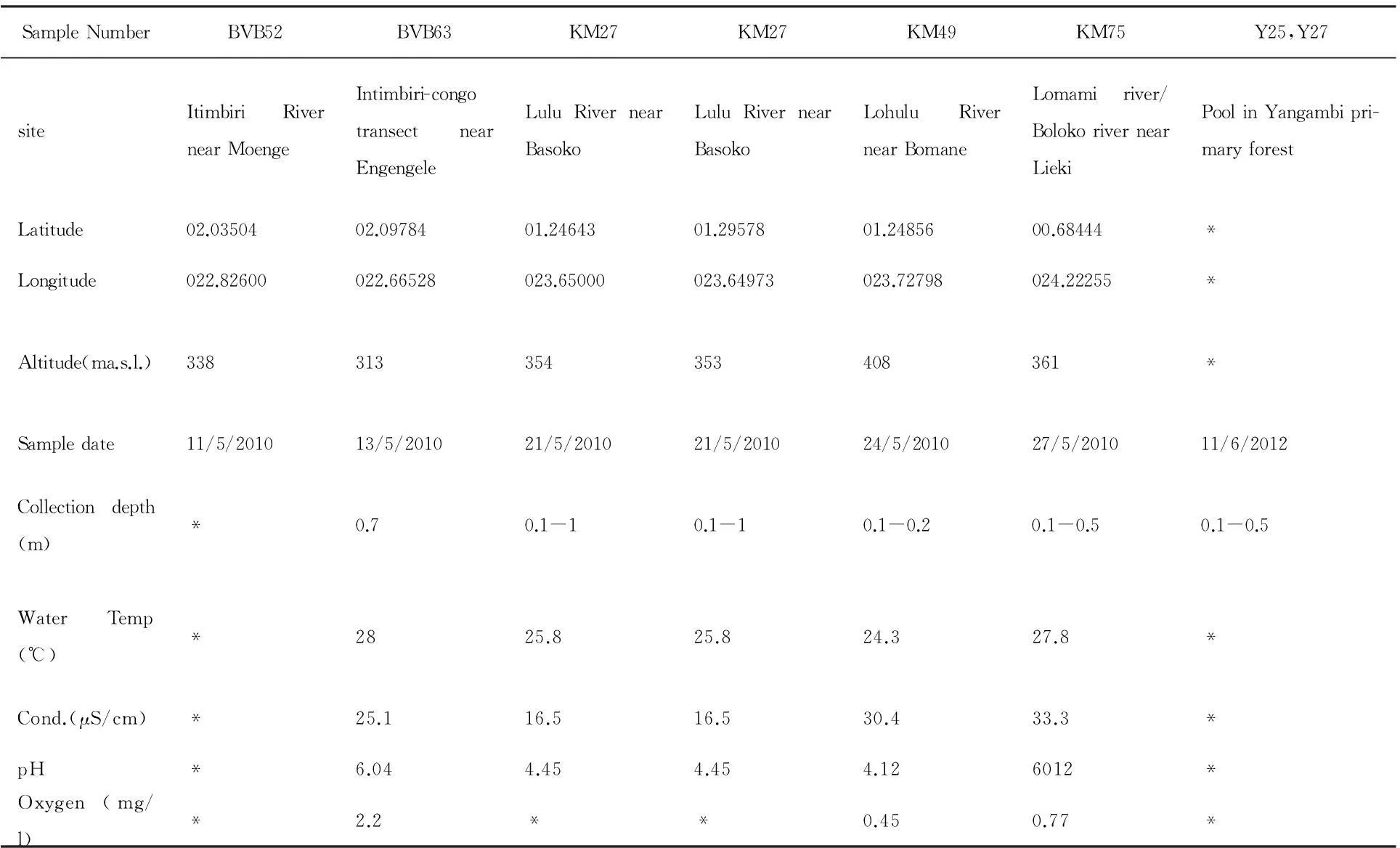
Table 1 Sample information of localities with Mytilina species and measurements of water quality
*No information
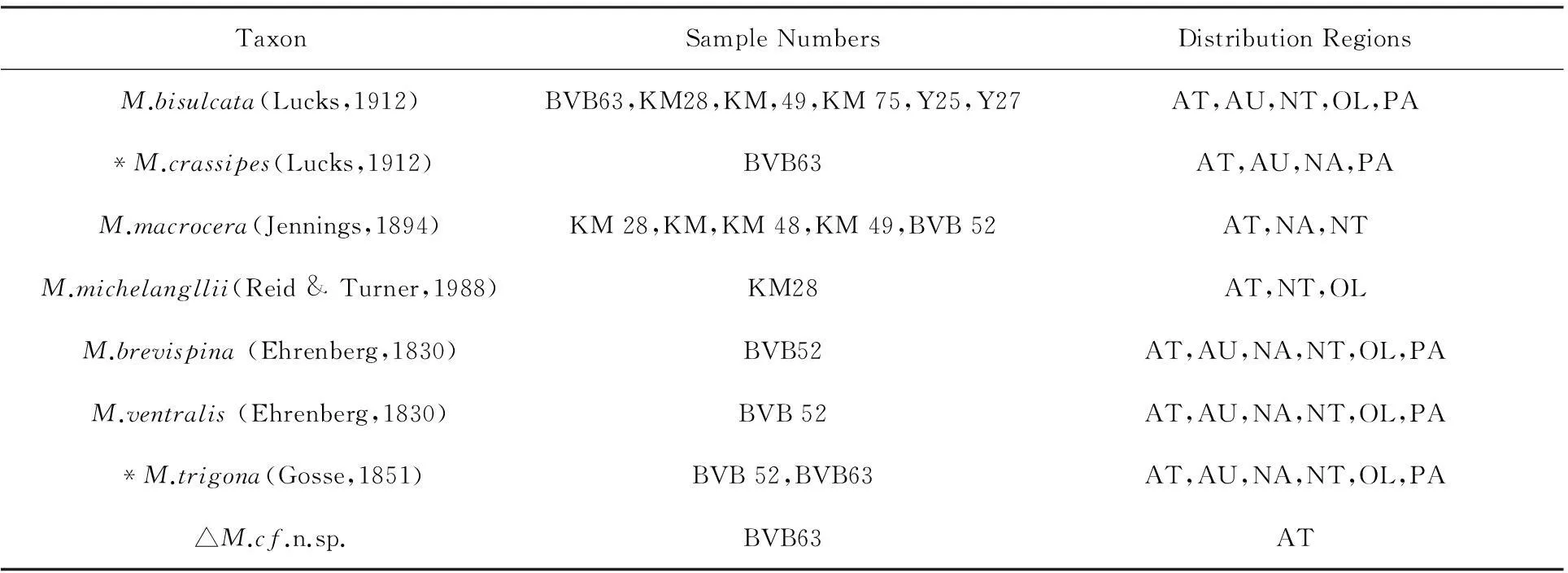
Table 2 Mytilina recorded from Congo Basin
AT- AfroTropical;AU- AUstralasian;NA- NeArctic;NT- NeoTropical;OL-Oriental(Indomalaya);PA- PalaeArctic
*New to Africa
△Endemic to Africa
3.1Five of these have been reported from Africa previously
(1)Mytilinabisulcata(Lucks,1912):(Fig.1a-c).In lateral view,the lorica shape of this species is rectangular.The toes are parallel-sided,with sharp tips that may be mistaken for claws.This species is widespread in the study area.
Measurements (of 10 specimens,in μm):Lorica length:135-160;Lorica width:52-67;Lorica height:71-92;Toe length:43-58.
(2)Mytilinamacrocera(Jennings,1894) (Fig.2a-c).This animal can hardly be confused for other congener because of its largest size and distinct anterior spines.The animal is not uncommon in tropical regions.
Measurements (of 10 specimens,in μm):Lorica length:280-307;Lorica width:218-234;Lorica height:118-129;Toe length:119-140.
(3)MytilinamichelanglliiReid & Turner,1988 (Fig.3).Only a single specimen was found.The species is characterised by having two long postero-ventral,and two short antero-ventral spines,as inM.ventralis.However,it has a blunt postero-dorsal hump,which is unlike the postero-dorsal spine ofM.ventralis.The species,albeit that it has only been recognized relatively recently,has to date already been recorded from many tropical regions.
Measurement (of 1 specimenin,in μm):Lorica length:135;Lorica width:77;Lorica height:68;Toe length:73.
(4)Mytilinabrevispina(Ehrenberg,1830) (Fig.4):The animal should be cosmopolitan,but very rare during this survey.
Measurement (of 1 specimenin,in μm):Lorica length:197;Lorica width:86;Lorica height:109;Toe length:76.
(5)Mytilinaventralis(Ehrenberg,1830) (Fig.5):Sample BVB52 contains a quite high number of this cosmopolitan species.
Measurements (of 10 specimens,in μm):Lorica length:202-228;Lorica width:70-85;Lorica height:81-93;Toe length:60-71.
There is a lot of confusion in the literature between the two last species,and their status as different species is reported here follows recent results of report[9]and of molecular studies[12].
3.2Two species are first records for Africa
(1)Mytilinacrassipes(Lucks,1912) (Fig.6):Body more or less slender.Toes with claws.Three foot seudosegements.Only a single specimen was found during this survey.
(2)Mytilinatrigona(Gosse,1851) (Fig.7a-c):We found many specimens of this rare species in two localities.Their lorica relatively soft,and is covered with distinct warts all over the lorica surface.Our specimens appear to be broader and larger when compared to other speciess.Their cross section is close to trapezoid.The species has a double dorsal keel,which is divideded by a broad longitudinal,middorsal fissure.The two keels are fused posteriorly.In dorsal or ventral view,the shape of lorica is elliptic,the head aperture has a weak notch dorsally and a broad U-shaped concavity ventrally.In lateral view,the outline of the ventral lorica is nearly straight whereas the dorsal margin is strongly curved.There is a broad notch near the foot aperture.The foot has two pseudosegements.The toes are long,slender,rigid and straight,without claws.
Measurements (of five specimens,in μm):Lorica length:143-190;Lorica width:94-108;Lorica height:98-137;Toe length:90-108.
3.3One possibly new species
One taxa found is particularly noteworthy,as it appears to be undescribed.However,as we could find only two isolated specimens we choose to remain cautious and present a brief description,so that it can be recognized,but we refrain from formally naming the species.
Mytilinaspecies (Fig.8a-d;9a-d):
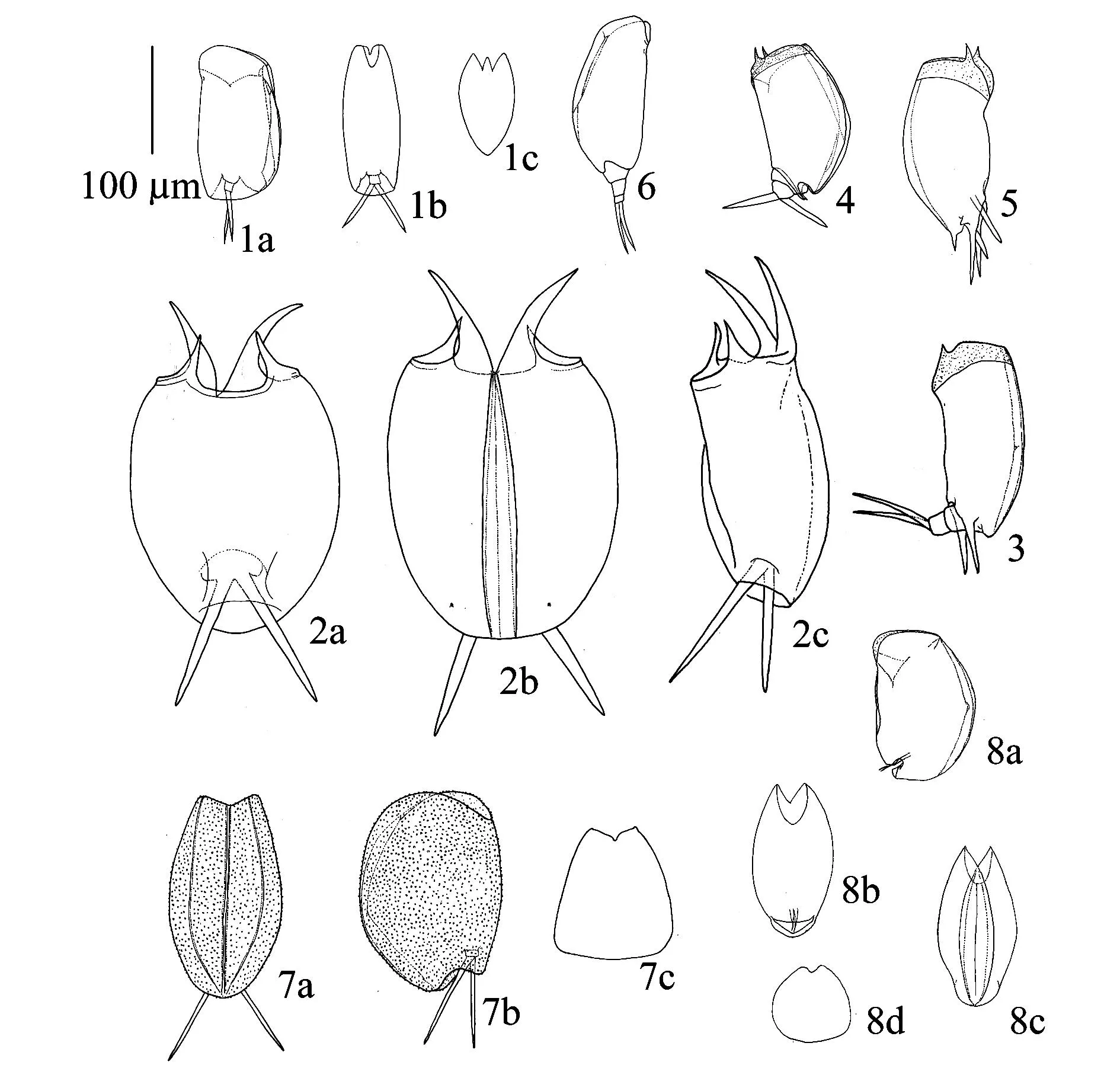
Figure 1.Mytilina bisulcata (Lucks,1912),1a:lateral,1b:ventral,1c:cross section;
3.3.1Type Locality
Transect of Intimbiri River and Congo River near Engengele,DR Congo 13/05/2010 (sample number:BVB63).A permanent slide with one specimen housed in the Royal Belgian Institute of Natrual Sciences,Brussels,Belgium.
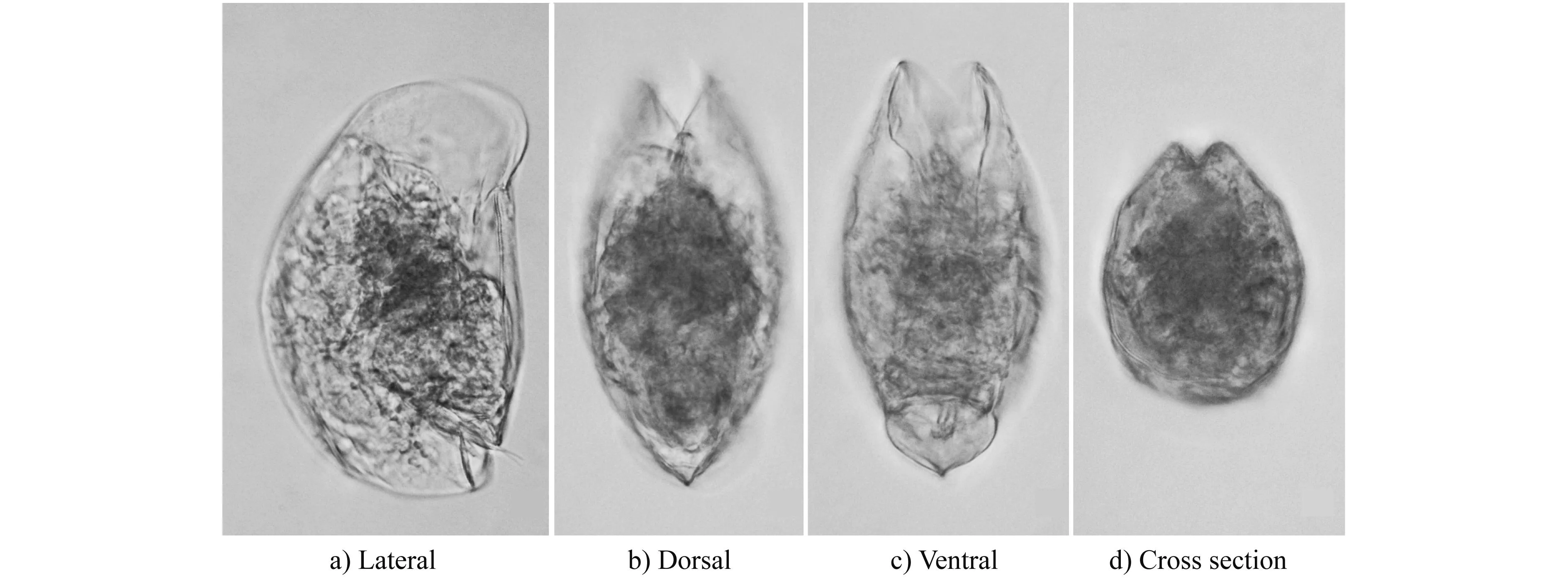
Figure 9 Photomicrographs of Mytilina cf. n.sp.
3.3.2Description
By the stiffness and shape of its lorica,the specimen appears to be a relative ofMytilinabrevispina,however,the absence of any anterior or caudal spine reminds ofM.bicarinataandM.bisulcata.The lorica is ovoid in cross section,and slightly compressed bilaterally.The dorsal crests are most widely separated in the middle of the lorica and converge to anteriorly and posteriorly.In dorsal or ventral view,the lorica shape is rhomboid,the head aperture has a deep V-shaped dorsal and an even deeper U-shaped ventral invagination.In lateral view,the lorica is straight ventrally and domed dorsally.There is a notch laterally of the foot aperture.There are two foot seudosegements.The toes are short,ending with clearly separated,slender and flexible long pseudoclaws.
Measurements(of two specimens,in μm) Lorica length×width×heigtht×toe length:
Speciemen one:131× 61× 61× 19.
Speciemen two:152× 68× 67×25.
4Discussion
Of over 110 samples examined,only 7 containMytilinaspecies,which indicates that this genus is relatively infrequent in fresh waters,when compared to genera asBranchionusandKeratella.When compare to the frequently encounteredLecane,Lepadellla,andTrichocerca,the diversity,both in terms of species and specimens,ofMytilinain the samples is relatively low.This also concurs with previous reports[13-14],as the genus never seems to occur in high numbers.When compare the same genera from different area,8 species ofMytilinain a one flood plain means high diversity indeed.
The sampled habitats in the Congo Basin and,in general,many freshwaters in Africa should be ideal places forMytilinaand other rotifers,because these habitats are characterised by oligo- to mesotrophic,slightly acidic,soft water conditions which are found to be optimal for rotifer species diversity[15].The number of species recorded will of course depend on the intensity of study.We here reported just one part of the survey.It is not enough to sample one or two times in such a large-scale basin.
5Acknowledgement
We wish to express our indebtedness to the sample collectors:Papy Mongindo,Ernest Tambwe,Bert Van Bocxlaer,Koen Martens,Christine Cocquyt and Patrick Grootarer.They overcame difficulties to enter the primary places of Congo basin,collected the precise samples for scientific research.
References:
[1]Dumont H J.Biogeography of rotifers [J].Hydrobiologia,1983,104:19-30.
[2]Segers H.Rotifera of some lakes in the floodplain of the River Niger (Imo State,Nigeria) [J].Hydrobiologia,1993,250:63-71.
[3]De Smet W H.Contribution to the rotifer fauna of the Bas Za?re.1.The rotifers from some small ponds and a river [J].Biologisch Jarboek Dodonaea,1989,56:115-131.
[4]De Smet W H.Contribution to the rotifer fauna of the Bas Za?re.2.Species composition and seasonal abundance of rotifers in a shallow pond [J].Biologisch Jarboek Dodonaea,1990,57:62-77.
[5]Congo Biodiversity Initiative.Expedition 2010.[EB/OL].[2014-09-10]http://www.congobiodiv.org/en/projects/expeditions/expedition-2010.
[7]Koste W R.Die R?dertiere Mitteleuropas.Borntraeger [M].Berlin:Stuttgart,1978,2:673.
[8]Segers H.A global checklist of the rotifers (Phylum Rotifera) [J].Zootaxa,2007,1564:1-104.
[9]Luo Y T,Segers H.The genusMytilinain China,with description of a new species (Rotifera:Monogononta:Mytilinidae) [J].Zootaxa,2014,3846 (4):561-568.
[10]Koste W,Shiel R J.Rotifera from Australian Inland waters III.Euchlanidae,Mytilinidae and Trichotriidae [J].Transactions of the Royal Society of South Australia,1989,113(1-2):85-114.
[11]Pourriot R.Rotiers from Petit Saut reservoir(French Guyana),with the description of a new taxon [J].Hydrobiologia,1996,331:43-52.
[12]Garcia-Morales A E,Elias-Guttierez M.DNA barcoding of freshwater Rotifera in Mexico:Evidence of cryptic speciation in common rotifers [J].Molecular Ecology Resources,2013,13(6):1097-1107.
[13]Reid J,Turner P N.Planktonic Rotifera,Copepoda,and Cladocera from Lagos Acu and Viana,State of Maranhao,Brazil [J].Revbrasil Biol,1988,48:485-495.
[14]Segers H,Pholpunthin P.New and rare Rotifera from Thale-Noi Lake,Pattalang Province,Thailand,with a note on the taxonomy ofCephalodella(Notommatidae) [J].Annales de Limnologie-international Journal of Limnology,1997,33(1):13-21.
[15]Segers H.Global diversity of rotifers (Rotifera) in fresh water [J].Hydrobiologia,2008,595:49-59.
(責任編輯:顧浩然)
剛果盆地的棘管輪屬(輪蟲門;單巢亞綱;棘管輪科)
羅永婷1, 吳波1, SEGERS Hendrik2
(1.上海師范大學 生命與環(huán)境科學學院,上海 200234; 2.比利時自然科學博物館,布魯塞爾 B-1000)
摘要:研究了2010年4月到5月和2012年6月二次采集自剛果盆地的水樣,共發(fā)現(xiàn)棘管輪屬Mytilina Bory de St.Vincent 1826的8個種,其中2個種 M.crassipes (Lucks,1912) 和 M.trigona (Gosse,1851)是非洲新紀錄種; M.macrocera (Jennings,1894)和 M.bisulcata (Lucks,1912)是剛果盆地多個樣點的常見種;M.ventralis (Ehrenberg,1830)和M.trigona,在剛果盆地個別樣點比較多見;M.michelangllii Reid & Turner,1988, M.crassipes和M. brevispina (Ehrenberg,1830)在此次剛果盆地的調查中非常罕見;描述了一種棘管輪,其形態(tài)奇特,可能是新種.
關鍵詞:棘管輪屬; 多樣性; 小型后生動物; 剛果盆地
Corresponding author:LUO Yongting,College of Life and Environmental Sciences,Shanghai Normal University,No.100,Guiling Road,Shanghai 200234,China,E-mail:lyt@shnu.edu.cn
Received date: 2014-10-10
Foundation item: Study on pesticide residue quantity and bioremediation technique in aquiculture water of Jinshan District(C-6105-10-040)

